Draculas Through History
by Erin Somers
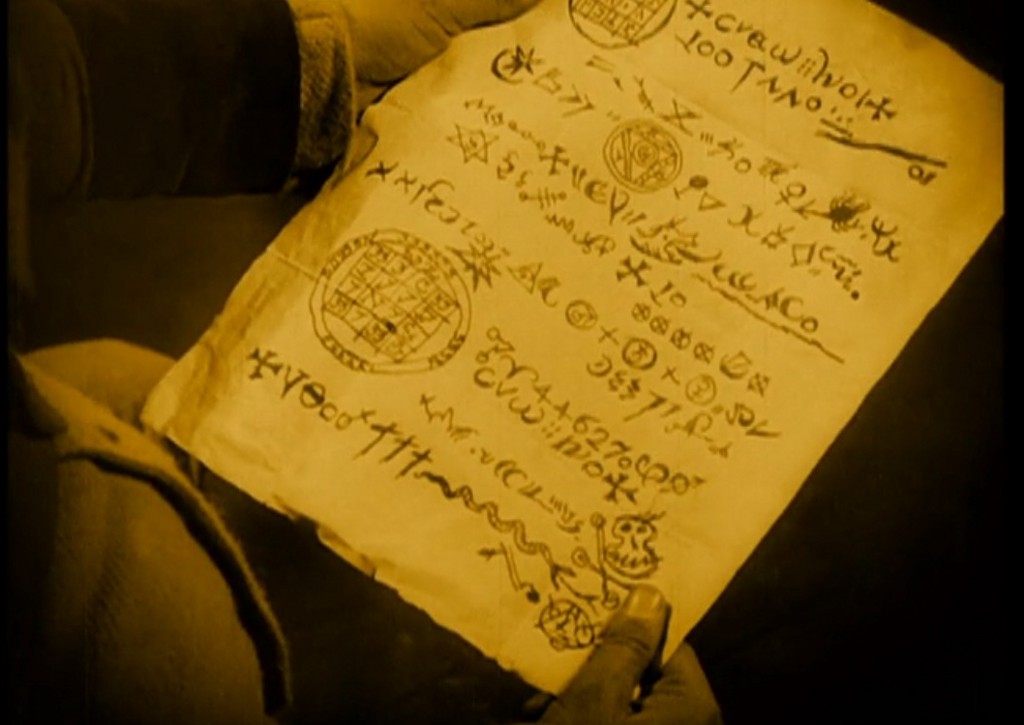
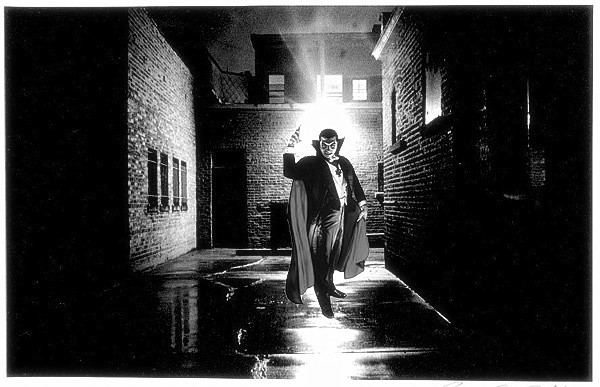
Since Bram Stoker wrote his novel in 1897, Dracula has become one of the most famous and reproduced stories in our culture. These days, Dracula seems a little quaint. The narrative is not that scary, not that shocking or sensational, compared to what has come along since. We’ve got richly art-directed cannibalism on network TV now. We’re post-Poltergeist and “they’re heeeere,” post-Antichrist, where testicles are crushed and blood is ejaculate. There’s a thing called torture porn and people shrug their shoulders about it. I hate to invoke The Human Centipede, but it did mark a grim psychosexual apotheosis in popular entertainment. Where do you go from these advancements? Surely not back to the man in the cape, collapsed in a garlic swoon. Yet Dracula endures, hokey accent and all.
I wanted to review every Dracula, but there are hundreds of versions. It would take months, maybe even a year, if you took days off to watch the occasional Frankenstein. In the last two weeks, I watched/read/consumed as many portrayals of Dracula as I could.
Dracula, by Bram Stoker, 1897
Stoker’s virtuosic epistolary novel is thought to be inspired by the life of Vlad the Impaler, the fifteenth century Wallachian prince known for his unusual cruelty and grisly executions (some people disagree). London solicitor Jonathan Harker is sent to Transylvania to broker a real estate deal with Count Dracula. The build-up is slow (endless warnings from peasants in the Carpathian Mountains), but once Harker gets there, things get weird fast. Finally, Dracula makes his escape to England to move into the house across the street from Harker, and stalk his fiancée Mina. After that it’s mostly blood sucking and bat wings in the night, until Abraham Van Helsing shows up to open the blinds.
The scary stuff is well-disguised. In one scene at the castle, Dracula’s brides are about to suck Harker’s blood, when Dracula appears and tosses them a baby in a bag instead. A live human baby. In a bag. And they eat it. But it’s so subtle you could almost miss it. Still, it’s a good yarn if you’re willing to overlook all the women being punished for their sexuality. “It was the times,” etc.
Nosferatu: A Symphony of Horror, directed by F.W. Murnau, 1922
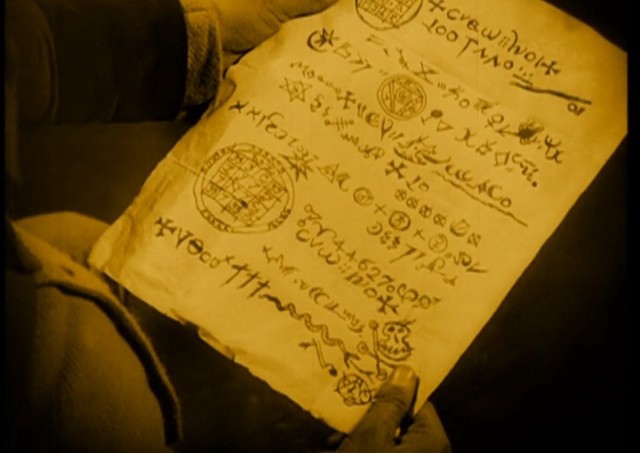
I’m usually more into talkies, but this is actually pretty good for a silent film. First title card: “Nosferatu. Does this not sound like the deathbird calling your name at midnight?” Um, I don’t know, kind of? Murnau did not own the rights to Stoker’s novel, so certain superficial details were changed. This mostly amounted to names (Dracula is Count Orlok, Harker is Hutter), and was not enough to keep people from getting sued. Max Schreck’s Count Orlok looks great in his Sergeant Pepper coat. But Knock, the estate agent turned mind-slave, steals the show with his portrayal of bug-eating lunatic, and also by being the only person on earth who can read Wingdings. If you’re having a Halloween party, you should project this on the wall to seem cool.
Dracula, directed by Tod Browning, 1931
I bet Bela Lugosi is the one you think of when you picture Dracula, his slicked back hair and sweet medallion, his dignity in spite of everything. Tod Browning also directed the exploitative and disturbing Freaks, but Dracula, which came first, is his masterpiece. Even on a laptop screen, the black and white photography is amazing. Lugosi spends the whole film in a tux, and the camera never strays from the blazing torch of his white shirt-front. The film was not scored, but in 1999, Philip Glass wrote and recorded music for it and Universal re-released it. The combination of the visuals and the music is almost unbearably beautiful. Have you ever rolled around in a trunk full of velvet? Me neither, but that’s the best metaphor I’ve got right now.
Dracula, radio play by Orson Welles, 1938
What are you supposed to do while listening to a radio play? Read blogs? Make a kale salad? Stare straight ahead at a picture of young Orson Welles without looking to the right or left? I was in this for the Foley, especially the blood sucking noises, but the recording is ultimately too scratchy and anyway there’s no real reason to listen to a radio play of Dracula in 2014.
Blacula, directed by William Crain, 1972
Now would be a good time to point out that there are no people of color in most versions of Dracula. Blacula, the ’70s Blaxploitation film, is the notable exception. It’s free of pretentions and also the usual introductory throat clearing. In the very first scene there’s a sword vs. torch fight, an African prince is turned into Blacula, and Dracula himself delivers a long monologue with a single bloody tear running slowly down his face. Cut to: 150 years later, a couple of gay interior designers are buying Dracula’s castle and shipping the contents back to L.A. From my notes: “Now this is a plot.”
Wino Dealing With Dracula, Richard Pryor, 1975
Why don’t you get your teeth fixed? It’s 1975.
Nosferatu: Phantom der Nacht, directed by Werner Herzog, 1979
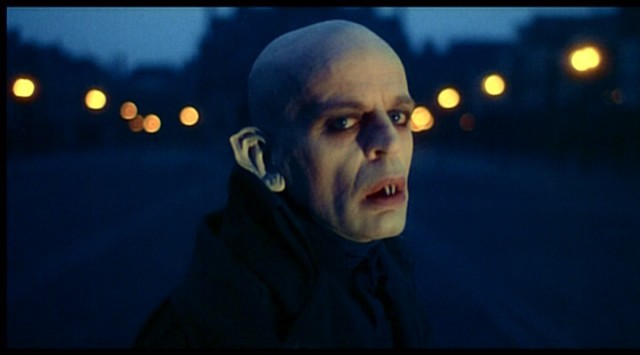
Herzog’s Nosferatu is about as close to perfect as movies get. Klaus Kinski is the scariest Dracula, hands-down. When Dracula is too handsome, the attraction/repulsion tension is ruined for me. Wanting some fanged pretty boy to bite your neck is no great leap. But Kinski plays it like a blameless creature, an innocent. An ugly baby, almost, with his bald head and wide, blank eyes. What if part of you wanted to submit to that? Terrifying.
Bram Stoker’s Dracula, directed by Frances Ford Coppola, 1992
Coppola’s version is more or less faithful to the original text. Keanu Reeves plays Harker with all the verve of a wooden stake that someone has given a bowl haircut. From my notes on the castle sequence: “Just kill him.” Winona Ryder is a perfect Mina, though, and Gary Oldman’s Drac is a smoldering weirdo in lavender steampunk glasses. The tone is all over the place; it can’t make up its mind whether it’s campy or not. Anthony Hopkins arrives on the scene as Van Helsing too late and too exhausted to salvage any gravitas. Still, at two hours and eight minutes it’s bloated fun. The highlight is Tom Waits as Renfield, in a performance straight out of a Tim Burton-era Batman. Idea: someone should put Tom Waits in a Batman.
Dracula: Dead and Loving It, directed by Mel Brooks, 1995
Your enjoyment of this will depend entirely on your feelings about Leslie Nielsen’s face CGI’d onto a bat’s body.
Wes Craven Presents: Dracula 2000, directed by Patrick Lussier
Dracula 2000 is partially set in a Virgin Megastore. This is supposed to be a highly significant detail, as the Mina character is named Mary, and Dracula is revealed at the end to be [spoiler alert for a terrible movie that came out in 2000] Judas Iscariot. Steven, no one’s favorite character from That ’70s Show, takes a leech to the eyeball in the film’s only gratifying scene.
Dracula, NBC TV Series, 2013
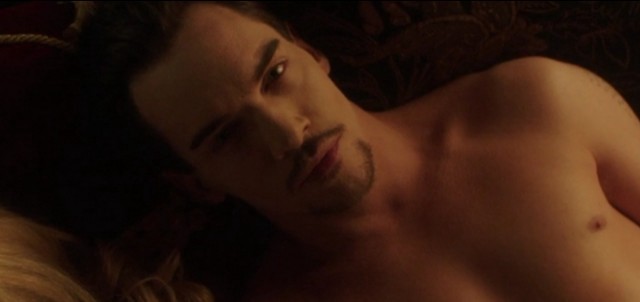
I think we found the winner of the convoluted awards. Dracula — — neutralized for centuries in a cage and dehydrated to a shriveled husk — — is reanimated in 1891 by Van Helsing to join the fight against the Order of the Dragon. To do this, he has to pose as an American industrialist and ruin the business prospects of a shady cabal of London capitalists by popularizing Van Helsing’s bio-magnetic alternative to electricity. Well, naturally. From my notes: “Or he could just do the neck biting thing.” Meanwhile, the Order tries to thwart Dracula, but their leader cannot resist having clothes-on, network television sex with him all the time. Jonathan Rys Meyers is all right as Dracula, if you like your monsters gorgeous, waxed, and shrieking about Nikola Tesla.
Dracula Untold, directed by Gary Shore, 2014
This movie goes to great lengths to humanize Vlad the Impaler. He had to disembowel all those people to save his son! He had no other choice! Sure, okay. I saw this in the middle of the day on a Monday and there was only one other person in the theater. At some point he made an audible retching noise, but I don’t think he actually threw up.
Count Chocula Cereal
I looked for this at five different grocery stores in Brooklyn. Finally, my brother-in-law found it for me at a Target in New Jersey. He did not ask why I wanted it or was willing to go to so much trouble to get it. Count Chocula cereal is not chocolatey enough. It’s slightly better than eating paper, and slightly worse than eating nothing. But it did come with a free cut-out mask on the back of the box, which I ultimately opted not to wear to work.
The Monster Mash, Bobby “Boris” Pickett and the Crypt-Kickers
Everything’s cool, Drac’s a part of the band, and six hundred years from now the worst of our murderous psychopaths will be reduced to children’s breakfast cereal and novelty songs. I don’t hate the danceable beat, though.
Header image courtesy of Wikimedia Commons.
Erin Somers lives in Brooklyn. Follow her on Twitter @SomersErin.